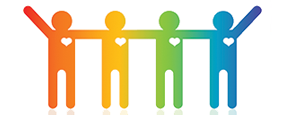A traumatic brain injury (TBI) can range from mild to severe, and the resulting symptoms may vary depending on the extent of the damage. TBIs can also fall into two other categories: open or closed head injuries. An open head injury occurs when an object enters the brain and causes specific, localized damage. Closed head injuries occur when a blow strikes a person’s head, as is often the case with a bad fall or car accident. In many cases, depending on the type of injury and its severity, TBIs can result in permanent neurological damage that induces lifelong struggles for the affected individual.
In the instance of a moderate to severe brain injury, as well as open or closed head injuries, a person can experience deficits in cognitive abilities, speech, language, sensory interpretations, perception, emotional behavior, and much more.
To understand brain injuries, it is important to look at the cause of injury and the way the victim’s body reacted in the moments after the incident occurred. If the person lost consciousness from 20 minutes to around six hours, and if they fall somewhere between 9 to 12 on the Glasgow Coma Scale, then he or she will most likely face a moderate TBI. If the person lost consciousness for more than six hours and fell between 3 and 8 on the Glasgow Coma Scale, then a severe brain injury might exist. The Glasgow Coma Scale is a neurological scale used by medical professionals to objectively assess a patient’s state of consciousness after a head injury. It is incredibly important to study a patient’s level of consciousness because the longer someone is unconscious, the more severe the damage may be.
A TBI can occur in two ways: the head trauma can damage the brain at the time of the accident (primary brain damage), or it can occur later on as swelling increases or other symptoms like seizures or increased blood pressure appear (secondary brain damage).
After a dangerous head injury, physicians will go through a series of steps to assess the extent of damage. CT scans, MRI’s, and other brain imaging techniques may be used. Doctors will also examine speech-language abilities and look for signs of physical struggle (trouble staying conscious, seizures, headaches, reduced muscle strength, loss of coordination, etc.). Behavioral and emotional changes can also be indicative of a TBI, as can impairments in thinking skills and a lack of environmental awareness.
Although there are steps a TBI survivor can take towards recovery, many victims never fully regain their independence and health. The Centers for Disease Control and Prevention reports that at least 1.7 million TBIs occur in the United States alone on a yearly basis. Older citizens (over the age of 65) are even more likely to sustain a TBI, and they will struggle to recover.
TryMunity, a non-profit organization, is working to increase awareness about the science behind TBIs while giving support to individuals and families who have been affected. Through their online community, TryMunity provides a platform for TBI survivors and supporters to bond and encourage one another on the road to recovery. If you or a loved one has been impacted by a TBI, visit http://community.trymunity.com/to join in the fight with others who understand.



